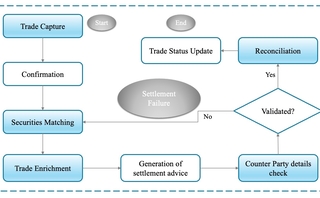LiquidityBook buys Messer in effort to beef up portfolio management capabilities
The OEMS provider has purchased the Hong Kong-based PMS provider—but don’t say it’s solely a play for the buy side.

LiquidityBook, a historically buy-side tech shop with ambitions of displacing Fidessa as a favorite sell-side order management system, has made its first acquisition, buying Hong Kong-based Messer Financial Software, a portfolio management and reconciliations solutions provider.
The buy also makes available LBX PMS 2.0, LiquidityBook’s second-gen portfolio management and accounting system, which has been enhanced by Messer. New functionalities—such as accounting and reconciliation workflows, full AUM, and shadow net asset value (Nav) capabilities—have been woven into LiquidityBook’s buy-side and sell-side products, with the goal of creating a one-stop-shop for order, execution and, now, portfolio management.
While the acquisition of a portfolio management provider seems, on its face, an appeal to only its existing buy-side client list, Shawn Samuel, LiquidityBook’s chief technology officer, says that isn’t the case. As an example, he offers the platform’s swap management capability.
There’s a real demand toward client-specific configuration, not customization, that is upgrade-friendly.
Jonathan Cross, LiquidityBook
“If I’m a mini-prime [broker] managing 50 client accounts, and I’m actually now collecting all the swap financing, tracking it, and sending out client invoices, our multi-asset tracking capabilities for fixed income and swaps can manage the books for a sell-side firm issuing those loans, financing and margin just the same way as it can track a buy-side managing that,” Samuel says. “Being able to invert that and go two-sided has always been our core advantage of being able to sell to both sides of the Street.”
LiquidityBook has staked its two-sided play on its singular code base, which means that its buy-side products and sell-side products use the same underlying code base but with different configurations among clients. It doesn’t write custom code for those clients—even complex ones—and instead implements new capabilities as configuration settings or as rules in a product’s rule engine.
The company began looking to reach more broker-dealer and outsourced trading firms over the last year and turn them into clients. It’s found some success with this one-size-fits-all approach, having taken home WatersTechnology’s Sell-Side Technology Awards earlier this year for best implementation at a sell-side firm. In the winning case study, LBX Portal, a software-as-a-service OEMS, was implemented at Capis, a Dallas-based institutional brokerage.
With the new sale, Messer’s founder and chief executive, Bryan Messer, joins LiquidityBook as APAC general manager and managing director of portfolio management solutions and AI. Messer adds that both platforms have benefited from having similar design patterns down to the microservices architectures, API-first approaches, and a focus on interoperability.
Other OMSs, such as those sold by Ion Group’s Fidessa and Broadridge, have also made changes, big and small, to their offerings to the industry’s demand for more choice when it comes to the parts that make up clients’ most important—and in many cases, most legacy—trading systems.
With the rise of APIs and open-source technology, end-users are increasingly recognizing that the perfect system for their purposes is likely a mix of third-party tech from more than one vendor and their own in-house applications—which means if they want that system, they’ll have to buy it and build it. It also means that the formula for this perfect system is little more than alchemy, an onus on both the buyers and the builders.
And regardless of whether it caters to the buy side or sell side, the OMS space has undergone rapid consolidation and shrinking profit margins over the last handful of years, and it’s become increasingly difficult to exist within—at least without marked differentiation. Bloomberg, for example, shut down its Sell-Side Order Management Solutions business line in 2019. The move followed Ion’s purchase of Fidessa, State Street’s acquisition of Charles River, and SS&C’s nabbing of Eze Software, all in 2018.
Samuel explains that up until now, LiquidityBook has typically sold its OEMS with relative ease to the higher end of the market that includes large asset managers, multi-manager funds, and multi-strat funds, and it’s worked in tandem with these firms’ chosen PMS and accounting providers—it publicly partnered with Clearwater Analytics last year—or provided some basic accounting functions by itself. But many startups and smaller hedge funds have demonstrated a need for the classic all-in-one POEMS system.
“While we did some business there, we didn’t do as much as we’d have liked because we didn’t have the classic, full front interface that a CFO wanted,” he says.
Then 18 months ago, LiquidityBook brought on Jonathan Cross, EMEA general manager, from Messer, where he spent four years as head of sales and business development. He introduced Samuel and the team at LiquidityBook to Messer, and the two companies loosely integrated prior to the sale.
Cross, who also spent eight years at Broadridge and 11 years at Tradar, brought 20 years of technical PMS experience to the mix and was intrigued enough by Messer and his product that he ended a sabbatical he had taken after some projects he had been given just didn’t interest him enough. And he continues to be moved by the industry’s push toward purpose-built, highly-specific technologies—and achieving them as easily as possible, as is LiquidityBook’s aim.
He could tell you “nightmare stories” of trying to simply upgrade clients and the risk that comes with it. He says it all boils down to the problem that there isn’t a coherent way of preserving client customizations to survive necessary upgrades for meeting regulations, expanding or changing use-cases, or just to stay current. A client that doesn’t do an upgrade in three years—believing if it isn’t broke, then they shouldn’t fix it—could need to do 10 upgrades all at once.
“That’s a massive risk,” he says.
“There’s a real demand toward client-specific configuration, not customization, that is upgrade-friendly. I think one of the things that’s impressed me the most here is that we’ve got sell-side clients, we’ve got outsourced trading desks—we’ve got all these different things—and the application looks totally different. But it’s actually the same code base. And to me, that’s massive. That’s what a modular system should do.”
Further reading
Only users who have a paid subscription or are part of a corporate subscription are able to print or copy content.
To access these options, along with all other subscription benefits, please contact info@waterstechnology.com or view our subscription options here: http://subscriptions.waterstechnology.com/subscribe
You are currently unable to print this content. Please contact info@waterstechnology.com to find out more.
You are currently unable to copy this content. Please contact info@waterstechnology.com to find out more.
Copyright Infopro Digital Limited. All rights reserved.
You may share this content using our article tools. Printing this content is for the sole use of the Authorised User (named subscriber), as outlined in our terms and conditions - https://www.infopro-insight.com/terms-conditions/insight-subscriptions/
If you would like to purchase additional rights please email info@waterstechnology.com
Copyright Infopro Digital Limited. All rights reserved.
You may share this content using our article tools. Copying this content is for the sole use of the Authorised User (named subscriber), as outlined in our terms and conditions - https://www.infopro-insight.com/terms-conditions/insight-subscriptions/
If you would like to purchase additional rights please email info@waterstechnology.com
More on Trading Tech
For MarketAxess, portfolio trading buoys flat revenue in Q3
The vendor is betting on new platforms like X-Pro and Adaptive Auto-X, which helped forge a record quarter for platform usage.
Quants look to language models to predict market impact
Oxford-Man Institute says LLM-type engine that ‘reads’ order-book messages could help improve execution
JP Morgan pulls plug on deep learning model for FX algos
The bank has turned to less complex models that are easier to explain to clients.
Nasdaq says SaaS business now makes up 37% of revenues
The exchange operator’s Q3 earnings bring the Adenza and Verafin acquisitions center stage.
Harnessing generative AI to address security settlement challenges
A new paper from IBM researchers explores settlement challenges and looks at how generative AI can, among other things, identify the underlying cause of an issue and rectify the errors.
The causal AI wave could be the next to hit
As LLMs and generative AI grab headlines, another AI subset is gaining ground—and it might solve what generative AI can’t.
Waters Wrap: Operational efficiency and managed services—a stronger connection
As cloud, AI, open-source, APIs and other technologies evolve, Anthony says the choice to buy or build is rapidly evolving for chief operating officers, too.
BlackRock forecasts return to fixed income amid efforts to electronify market
The world's largest asset manager expects bond markets to make headway once rates settle.








